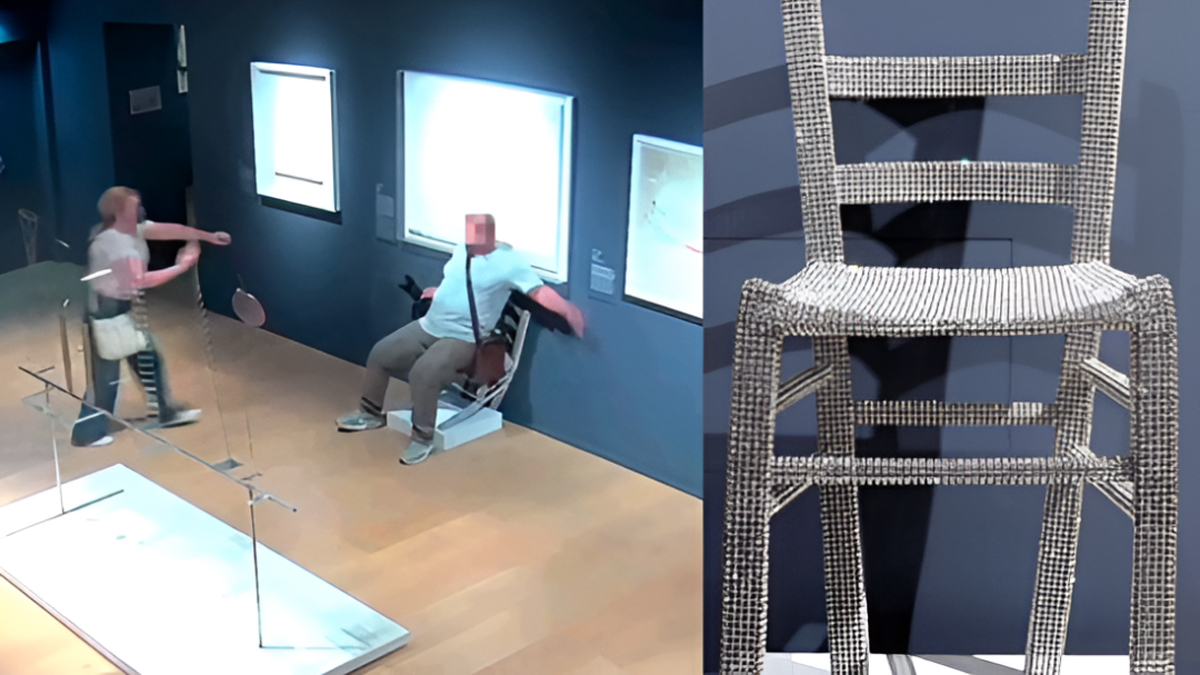Now Reading: Tourist Shatters Fragile Crystal-Covered ‘Van Gogh’ Chair: “Terrible and Shameful” Incident Sparks Outrage
-
01
Tourist Shatters Fragile Crystal-Covered ‘Van Gogh’ Chair: “Terrible and Shameful” Incident Sparks Outrage
Tourist Shatters Fragile Crystal-Covered ‘Van Gogh’ Chair: “Terrible and Shameful” Incident Sparks Outrage

A highly anticipated exhibition featuring a unique, crystal-covered “Van Gogh” chair has been marred by a deeply regrettable incident, as a tourist, while attempting to pose for a photograph, shattered the delicate artwork. The event, described by onlookers as “terrible and shameful,” has ignited a furious debate about visitor etiquette, the accessibility of art, and the responsibility of both institutions and individuals in safeguarding cultural treasures.
The incident occurred at the [Insert Exhibition Name/Location Here – e.g., “prestigious Grand Art Gallery in London” or “modern art installation at the City Museum”], where the chair, a stunning contemporary reinterpretation of Vincent van Gogh’s iconic “Chair” painting, was a centerpiece. Crafted by [Insert Artist’s Name if known, or “an acclaimed contemporary artist”], the piece was reportedly adorned with thousands of individually placed, fragile crystals, making it a shimmering and truly unique homage to the Dutch master. Its allure was undoubtedly part of its undoing, as visitors were drawn to its sparkling surface.
According to eyewitness accounts, a male tourist, seemingly oblivious to the “Do Not Touch” signs and protective barriers that were reportedly in place, bypassed these measures to sit on the chair for a photograph. The sheer weight and movement, combined with the inherent fragility of the crystal adornments, led to immediate and irreparable damage. Shards of crystal cascaded to the floor, and the chair itself was visibly compromised, its artistic integrity shattered along with its delicate surface.
“It was horrifying to watch,” stated one stunned visitor, [Insert Witness Name or “a witness who wished to remain anonymous”]. “He just plonked himself down without a second thought. The sound of the crystals breaking was sickening. It was so incredibly disrespectful to the artist and to everyone who came to appreciate the work.” Another observer added, “It’s terrible and shameful. How can someone be so careless with something so clearly valuable and fragile?”
The immediate aftermath saw exhibition staff rushing to the scene, visibly distressed by the damage. The area around the shattered chair was quickly cordoned off, and the tourist was reportedly escorted from the premises. Details regarding potential legal action or financial repercussions against the individual are yet to be fully disclosed by the [Insert Exhibition/Museum Management].
This unfortunate event has reignited a long-standing debate within the art world and among the general public: How can museums and galleries balance the desire for visitor engagement and accessibility with the imperative to protect delicate artworks? While many institutions strive to create immersive and interactive experiences, incidents like this highlight the persistent challenge of ensuring that visitors understand and respect the boundaries necessary for preservation.
Critics argue that some exhibitions may not adequately communicate the fragility of certain pieces or provide sufficient physical barriers. Conversely, many contend that personal responsibility and basic respect for art should be paramount. The “Do Not Touch” rule, often seen as a fundamental tenet of museum etiquette, appears to have been utterly disregarded in this instance.
The incident serves as a stark reminder of the vulnerability of art and the crucial role that every visitor plays in its preservation. As the art community grapples with the fallout from this “terrible and shameful” act, it is hoped that lessons will be learned, leading to enhanced protective measures and, more importantly, a renewed emphasis on fostering a culture of respect and mindfulness among those who seek to engage with the world’s artistic heritage. The fate of the crystal-covered “Van Gogh” chair, now a poignant symbol of artistic fragility, remains uncertain.










